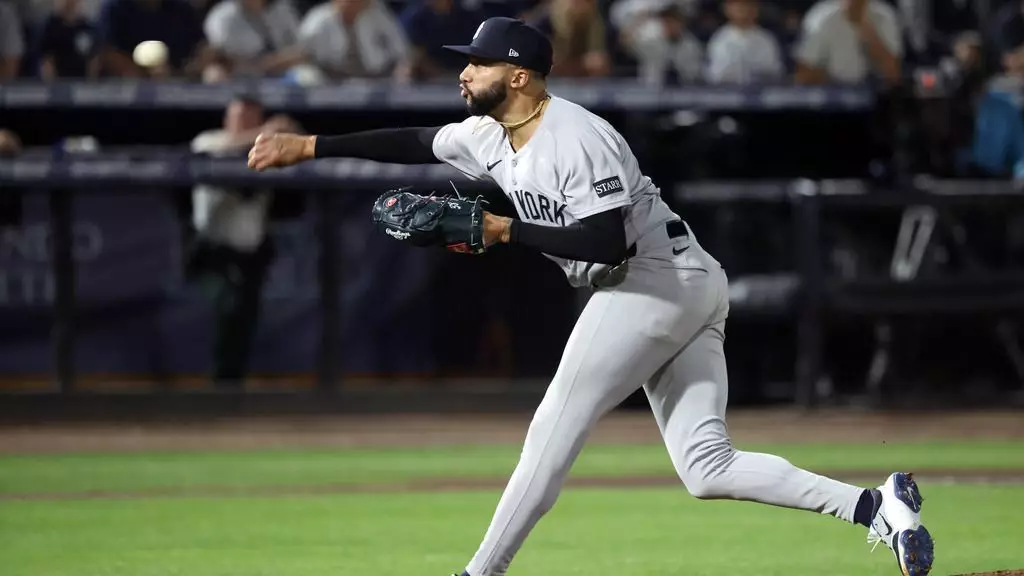Devin Williams joined the New York Yankees with great fanfare, transitioning from the Milwaukee Brewers where he had established a name for himself as a formidable All-Star closer. His earlier accolades—most notably a stellar 1.25 ERA last season—largely set expectations for a seamless continuation of success. As such, it’s disheartening to witness a player of Williams’ caliber struggling to find his footing with a new club. His journey demonstrates the psychological and athletic complexities involved in performing under the heavy weight of expectations, particularly in the unforgiving spotlight of Major League Baseball.
Williams’ first few outings with the Yankees have seen him falter significantly, culminating in a disheartening 9.00 ERA. Instead of showcasing the sharp, unhittable stuff that earned him fame, he has shown a tendency to walk batters and yield hits at an alarming rate. These struggles evoke a deeper conversation about the pressures athletes face—especially those who rise quickly to fame. Are we as fans and analysts too quick to judge based on a minuscule sample size? It begs the question: what is truly at play behind Williams’ uninspiring statistics?
The Pressure to Perform
One of the most compelling aspects of Williams’ situation is the pressure that accompanies a high-profile trade. When an athlete joins a storied franchise like the Yankees, the immediate expectation is to thrive under the spotlight. Yet, the nuances of professional sport suggest that adapting to a new environment, team culture, and coaching philosophy can create hurdles that aren’t exactly evident during recruitment or trades. Williams’ two stress fractures in his back earlier in the season further complicate this narrative. Not only is he battling to regain form physically, but he is also navigating the psychological impacts of a rocky start.
His manager, Aaron Boone, remains optimistic, cracking a door open for a comeback. “It’s a little bump here early, and he’s got all the equipment to get through it,” Boone states, illuminating the duality of support and pressure that exists in professional sports. Will Williams rise above this turbulence? Or will the swirling emotions inherent in his current predicament continue to overshadow his capabilities?
Emerging Alternatives and Future Implications
As Williams struggles, the emergence of Luke Weaver presents the Yankees with a potential silver lining. Weaver has stepped up remarkably, pitching flawlessly and reflecting a sharp contrast to Williams’ current state. With no earned runs over 11 innings and an impressive strikeout rate, one must ponder whether the Yankees should consider a strategic shift in their closer position, especially since Williams’ confidence appears shaky at best.
The implications of this choice stretch far beyond just a single game; it could impact the Yankees’ playoff ambitions later in the season. The noticeable difference in performance levels foreshadows potential shifts in team structure and dynamics. Should Williams become trapped in a cycle of inconsistency, the Yankees may weigh the cost of keeping him in the closer role against the necessity of putting their best team forward.
The Hard Truth of Recovery
It is easy to look at numbers and analytics to gauge a player’s performance, but statistics can often obscure the personal struggles behind the game. Williams’ admission of having only generated one swing-and-miss from seven changeups reflects a worrying trend: perhaps he is too caught up in adjusting his gameplay instead of simply trusting his instincts. “Maybe using it too much,” he remarked candidly, illustrating self-awareness that could be pivotal for his recovery process.
The hard truth is that exceptional athletes are not immune to downturns. Williams is in a battle not just against hitters but against his own mindset. Ensuring that he maneuvers through this slump effectively will require not only technical adjustments but also mental fortitude—a combination that is often elusive in high-stakes environments.
Williams’ challenge is emblematic of how quickly fortunes can change in professional sports. With each misstep, the road to recovery feels steeper, yet the very nature of competition challenges players to dig deeper. At the intersection of talent and resilience, Williams has an opportunity to reclaim his narrative—the question remains: will he seize it?


Leave a Reply